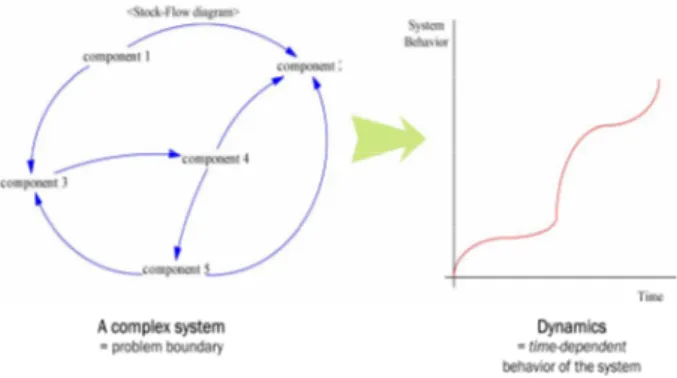Performance Assessment Methodology for Physical Protection System
in Nuclear Facilities based on System Dynamics
Dohyoung Kim, a Chansoo Kim, b Donghan Yu, c Gyungsik Min, c
a, Systemix Co., Ltd. 915 Character Greenvil 395-73 Sindaebang-dong, Dongjak, Seoul, Korea 156-010 b, MIT Nuclear Science and Engineering Dept. Cambridge, MA, 02139, U.S.A
c, NNCA Verification Technology Dept. P.O. Box 114 Yuseong, Daejoen, Korea 305-600
1. Introduction
The 9/11 event in the U.S.A has raised the special need of consideration on the performance of Physical Protection System (PPS) in the nuclear facilities against terror actions such as intrusion from outside. The purpose of the system is to protect and mitigate unacceptable radiological consequences that can jeopardize the health of the working personnel, the public and/or environment by exposure to nuclear materials.
Currently, several methodologies have been investigated for additional design requirements on the PPS against malevolent acts such as 9/11-type attack for nuclear facilities in many countries. The methodology for the assessment of the PPS performance would include a non-linear and dynamic complexity, which characterized as the time-delay, history-dependent, feedbacks among variables. It also includes tightly coupled and counterintuitive behavior of complex systems, and the interaction of each characteristics in the domain over time.
This study proposes the methodology for the PPS performance in nuclear facilities based on system dynamics. The proposed methodology could provide a capability to represent non-linear, dynamic complexity and to assess the integrated performance of the PPS.
2. Methods
2.1 System Dynamics
The System Dynamics approach was originally suggested by MIT Sloan school professor, Jay W. Forrester to illustrate many feedbacks in a complex system. System dynamics approach is also named stock and flow diagram by reason of consideration of feedback for system analysis.[1]
It is difficult to describe internal logic because the context itself is a complex system. For instance, non-linearity and dynamic complexity exist from many
feedbacks, time-delays in the situation of the interactions between PPS and intrusion actions. Therefore, it is the first reason to select system dynamics approach that the ability to write down the logic easily.
Figure 1 shows the basic concept of system dynamics; the context of a system at each time is illustrated, and the result for next time step will be calculated with its feedback and values at that time. The proposed methodology would borrow this kind of the feedback concept.
Figure 1. System Dynamics
2.2 Requirements
The requirements for the proposed methodology are as follows:
z Dynamic feedback consideration between PPS and intruders
z Redundant approaches for input values; 1) direct input by users and 2) automatic input by system from random sampling from probability distributions to guarantee the randomness
z Explicit consideration of exogenous impact factors, such as rain, snow, wind and so on
z Simulation with many experimental process or scenarios
z Simulations with the uncertainties or probability distributions of designated variables
Transactions of the Korean Nuclear Society Autumn Meeting Busan, Korea, October 27-28, 2005
2.3 Code Design
A computer code based on the proposed methodology is designed to consist of the following 7 modules. Each module in the code is programmed to meet the appropriate functions described as bellow.
z Input module
- Input required value to variables,
- Prepare several scenarios provided by user z Intrusion module
- Calculate the intruder position - Describe the physical state of PPS z Detection module
- Detection of intrusion by PPS
- Notification of detection to CAS (Central Alarm System)
z Response module
- Response of the PPS to intruders - Describe the action of response forces z Facility module
- Describe the state of nuclear facility - Select vital protection areas
z Output module
- Describe the required output variable state z Database module
- Contain the required database
- Communicate with other modules to transfer required data
IAEA (International Atomic Energy Agency) recommends 5 minutes as a criterion to evaluate the success of the PPS.[2] If the intruder can’t be neutralized by the internal response forces within 5 minutes, the external response forces would be deployed. Therefore, 5 minutes can be a criterion to evaluate the performance of the PPS. For 5 minutes, the intruder interacts with the several functions in the PPS and finally approaches the vital area in the system. When the intruder could arrive inside the vital area within the given time, it would be considered as a failure of the PPS. Figure 2 depicts the whole design logic adopted in the computer code.
Figure 2. Design logic in the computer code
3. Conclusion
The special consideration on the performance assessment of PPS in nuclear facilities has risen after 9/11 event in the U.S.A. The assessment procedure is complex inherently, originated from dynamics, feedbacks and time delays in a problem domain. This study adopted the methodology based on System Dynamics to assess the performance of the PPS in nuclear facilities. The computer code built based on the proposed methodology consists of the 7 modules to assess the performance of the system. These modules that are communicated each other with feedback approach would calculate the position of intruder for 5 minutes after the beginning of intrusion. Finally, the computer code is used to assess the performance of PPS on the comparison of the final position of intruder with the pre-defined vital protection areas in nuclear facility.
REFERENCES
[1] John D. Stermann, “Business Dynamics; Systems Thinking and Modeling for a Complex World”, McGraw-Hill, 2000
[2] INFCIRC/225/Rev. 4, “The Physical Protection of Nuclear Material and Nuclear Facilities,” International Atomic Energy Agency, Vienna, Austria, 1999.
Intrusion, T=0 Calculate the position of intruder, T=t Exogenous variables, T=0 Endogenous variables, T=0 Intrusion success? T=5 min Database performancPPS e Required Data Feedback

